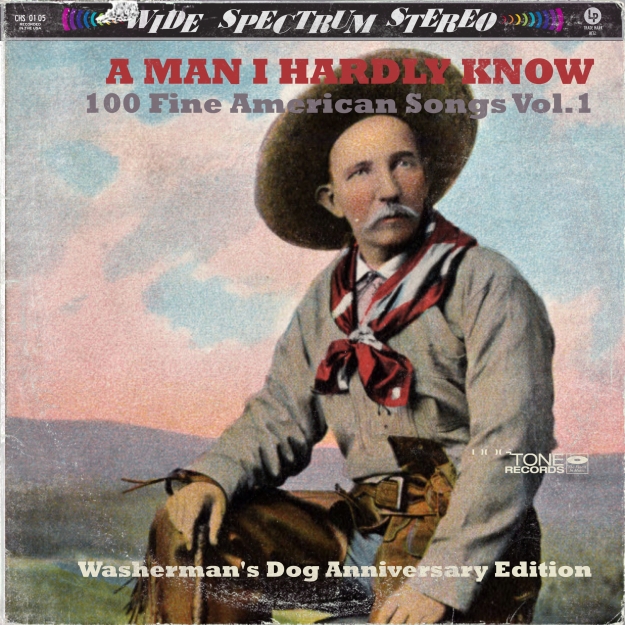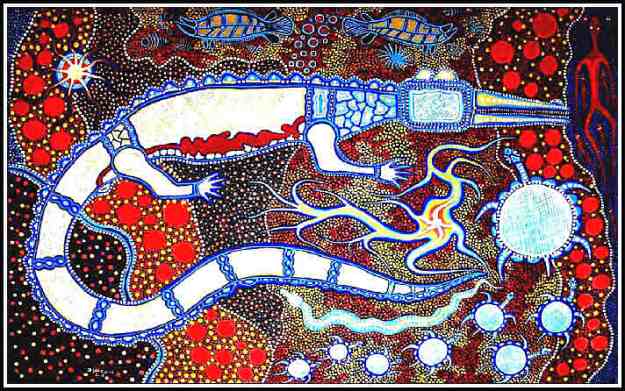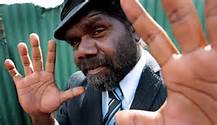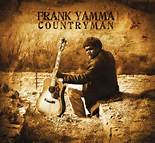
As promised, to mark the rather unexpected milestone of 700 posts on the Washerman’s Dog and Harmonium Music Blog, I’ve put together the first collection of 100 songs.
To start, I’ve selected some juicy cuts, old favorites and fresher discoveries, that fall into the category of American roots music. Alt country, honkytonk, Americana, country, folk, hillbilly, rockabilly bluegrass and gospel are some of the other labels for this sort of music. I don’t post as much ‘roots’ music as I’d like, so I’m glad to kick the celebrations off with this century of tunes.

Track Listing: (A Man I Hardly Know. Vol.1)
01 Long Walk Back to San Antone [Junior Brown]
02 A Man I Hardly Know [Loretta Lynn]
03 Beyond The Great Divide [Emmylou Harris]
04 Odds and Ends [Outlaw Social]
05 Twilight On The Trail [Clint Eastwood]
06 Wild Side [Son Volt]
07 Killing the Blues [Alison Krauss and Robert Plant]
08 Poquita Fe [Tish Hinojosa]
09 Old Habits [Wayne Yates and Co.]
10 Because the Wind [Joe Ely]
11 Been Down So Goddamn Long [Dan Brodie and the Broken Arrows]
12 I Feel the Blues Movin’ In [Dolly Parton, Emmylou Harris, Linda Ronstadt]
13 What Little I Got Left [James Hand]
15 Mornin’ Pills [The Boonswagglers]
16 You Win Again [Keith Richards]
17 Reso Fandango [Megan Lovell]
18 Every Kind of Music But Country [Robbie Fulks]
19 Tarnished Angel [George Jones]
20 Drivin’ Nails in My Coffin [Asleep At the Wheel]
21 Old Rugged Hills [Olive & Eva]
22 The Ballad of Thunder Road [Robert Mitchum]
22 Tomorrow Never Comes
23 Old Friends [Chuck Prophet]
24 What You Gonna Do Leroy (With Robert Plant) [Buddy and Julie Miller]
25 Rock Island [Buffalo Gospel]
26 Fast as You [Dwight Yoakam]
27 Long Black Road [Slim Dusty]
28 I Couldn’t Keep From Crying [Album Version] [Johnny Cash]
29 Fingernails [Joe Ely]
30 Highway Patrolman (Album Version) [Johnny Cash]
31 Sticks & Stones [Wanda Jackson]
32 Indian Queens [Nick Lowe]
33 Desolation Row [Chris Smither]
¢¢

Track Listing: (The Unbroken Circle. Vol. 2)
01 Hold To God’s Unchanging Hands [David Grisman]
02 Just Call On Jesus [Larry Sparks]
03 Please Take the Devil Out of Me [Caitlin Cary]
04 Wicked Saviour [Rex Hobart]
05 Softly And Tenderly [Hank Williams]
06 Fall on the Rock [Buddy Miller]
07 Tijuana Bible [Rom Russell]
08 Were You There When They Crucified My Lord? [Johnny Cash and Carter Family]
09 I’m Using My Bible for a Road Map [Porter Wagoner]
10 Rivers Of Babylon [Steve Earle]
11 Hide My Sin (A.b.o.r.t.i.o.n N.e.w Y.o.r.k) [Lorene Mann]
12 Brighter Mansion [Longview]
13 Sweet Forgiveness [Iris Dement]
14 Plow Through The Mystic [Jeff Black]
15 Hard on Things [Giant Sand]
16 Drifting Too Far From The Shore [Jerry Garcia, Dave Grisman, Tony Rice]
17 Almost Persuaded [Louvin Brothers]
18 Life’s Railway to Heaven [Patsy Cline]
19 Jesus Gave Me Water [Doyle Lawson and Quicksilver]
20 The Gloryland Way [Bill Monroe]
21 With God On Our Side (Live) [Bob Dylan]
22 The Far Side Banks of Jordan [Bluegrass Gospel Project]
23 Will The Circle Be Unbroken [Holmes Brothers]
24 Redemption [Johnny Cash]
25 I Hear a Sweet Voice Calling [The Handsome Family]
26 How Great Thou Art [Dolly Parton]
27 Radio Station S-A-V-E-D [Roy Acuff]
28 Sometimes I Feel Like a Motherless Child [Charlie Rich]
29 Where The Soul Never Dies [Charlie Moore]
30 I’m A Man Of Constant Sorrow [Stanley Brothers]
31 Pharisee [Stan Rogers]
32 Peace In The Valley [Sons of the Pioneers feat. Roy Rogers]
33 There Ain’t No Grave Gonna Hold My Body Down [Brother Claude Ely]
¤¤

Track Listing: (Hungry for Love. Vol.3)
01 Blue Moon Revisited (Song For Elvis) [Cowboy Junkies]
02 Hungry For Love [Patsy Cline]
03 Shine [Waylon Jennings]
04 Don’t Speak In English [Chip Taylor and Carrie Rodrigues]
05 Till Death Do Us Part [Ray Price]
06 It Makes No Difference [The Band]
07 If We Make it Through December [Merle Haggard]
08 I Can’t Help It [George Jones]
09 I Miss You Already [Duane Jarvis]
10 After the Gold Rush [Dolly Parton, Emmylou Harris, Linda Ronstadt]
11 The Heart That You Own [Dwight Yoakam]
12 Thursday [Sam Baker]
13 Milk Of The Moon [Greg Brown]
14 Someday I’ll Get out of These Bars [Jerry Jeff Walker]
15 A Little More Time [The James Low Western Front]
16 B Movie Boxcar Blues [Delbert McClinton]
17 Neon Tombstone [Phil Lee]
18 Honey Where’s the Money Gone [Solomon Burke]
19 The Plans We Made [Lonesome Bob]
20 Firecracker [The Wailin’ Jennys]
21 Till I Gain Control Again [Van Morrison]
22 As Soon As I Hang Up The Phone (With Loretta Lynn) [Conway Twitty]
23 The Warm Red Wine [Willie Nelson]
24 Between The Daylight And The Dark [Mary Gauthier]
25 Before & After Love [Mark Halstead]
26 That’s Right (You’re Not From Texas) [Lyle Lovett]
27 Right In Time [Lucinda Williams]
28 Powerlines [Grant Peebles]
29 Let’s Think About Living [Teddy Thompson]
30 Poor Ellen Smith [Laura Cantrell]
31 Portland Oregon [Loretta Lynn]
32 The Race Is On [Grateful Dead]
33 In Spite of Ourselves [John Prine and Iris Dement]
¤¤












